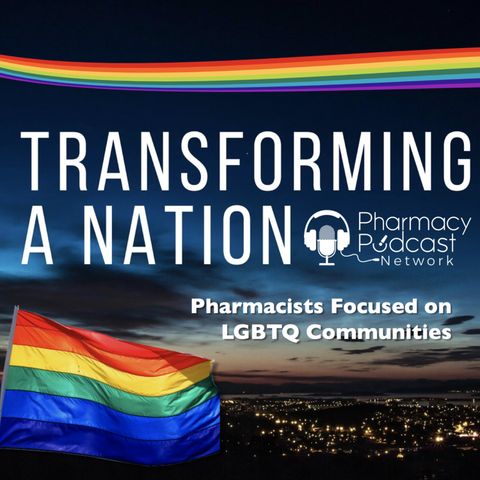Pharmacists Focused on LGBTQ Communities | Transforming a Nation

Download and listen anywhere
Download your favorite episodes and enjoy them, wherever you are! Sign up or log in now to access offline listening.
Description
Our guests today are Michelle Sherman, RPh, who is a member of the Pharmacy Podcast Network & has a podcast called the "Conscious Pharmacist Podcast" & Jay Holloway PharmD, returning...
show moreReferences, from Pharmacy Today:
https://www.pharmacytoday.org/article/S1042-0991(20)30876-8/fulltext
Pharmacists Focused on LGBTQ Communities, the latest chapter of the "Transforming a Nation" podcast series.
Pharmacists need to acquire foundational knowledge about key concepts and terminologies relevant to the LGBTQ population.
To provide care consistent with cultural competence and humility, pharmacists must also be aware of the diversity between and within different segments of the LGBTQ community, and the intersectionality of multiple identities that shape a person’s life experiences. Furthermore, it is important to note that while various identities such as gender, sexual orientation, and gender identity intersect, one is not predictive of the other. For example, a person’s gender identity does not determine their sexual orientation and the biological sex designated at birth does not define their gender identity.11Sexual orientation is a person’s emotional, romantic, sexual attraction, or non-attraction to other people and is composed of three separate dimensions: behavior, identity, and desire. Some people may engage in same-sex sexual behavior but not identify as lesbian, gay, or bisexual. Similarly, a person may be sexually, romantically, or emotionally attracted to members of the same sex and choose not to be sexually active with same-sex partners. For research purposes, the terms “men who have sex with men” (MSM) and “women who have sex with women” (WSW) are often used to describe a person’s sexual behavior regardless of their identity.
Sex refers to a set of biological attributes primarily related to physical and physiological features. The phrase “sex assigned at birth” (SAAB) or “designated sex at birth” (DSAB) is used to describe a person’s biological sex, most often, but not exclusively, based on the external appearance of genitalia at birth. Gender is a socially constructed concept used to characterize the behaviors, actions, and qualities of women and men or girls and boys. The critical flaw of an exclusive binary paradigm is that it does not account for the inherent diversity of human gender. A more expansive conceptualization of gender recognizes that each person possesses a wide range of characteristics that may or may not be consistent with the gender binary, represent a combination of male and female, or fall somewhere in between the two.
Gender identity is a person’s inner sense of their gender. For some people, their gender identity may not be congruent with the one typically expected based on their SAAB/DSAB. They may describe themselves in a variety of ways including, but not limited to, transgender, male, female, gender fluid/genderqueer, nonbinary, agender, or as another gender. Decisions to change gender expression and/or physical appearance to be more consistent with their gender identity through medical (e.g., hormone replacement therapy), nonmedical (e.g., voice therapy, choosing an affirming name, etc.), and/or surgical options (e.g. gender affirmation/confirmation surgery) is wholly determined by the individual.
The National LGBTQIA+ Health Education Center
https://www.lgbtqiahealtheducation.org/
See omnystudio.com/listener for privacy information.
Information
| Author | Pharmacy Podcast Show |
| Organization | Pharmacy Podcast Show |
| Website | - |
| Tags |
Copyright 2024 - Spreaker Inc. an iHeartMedia Company

Comments